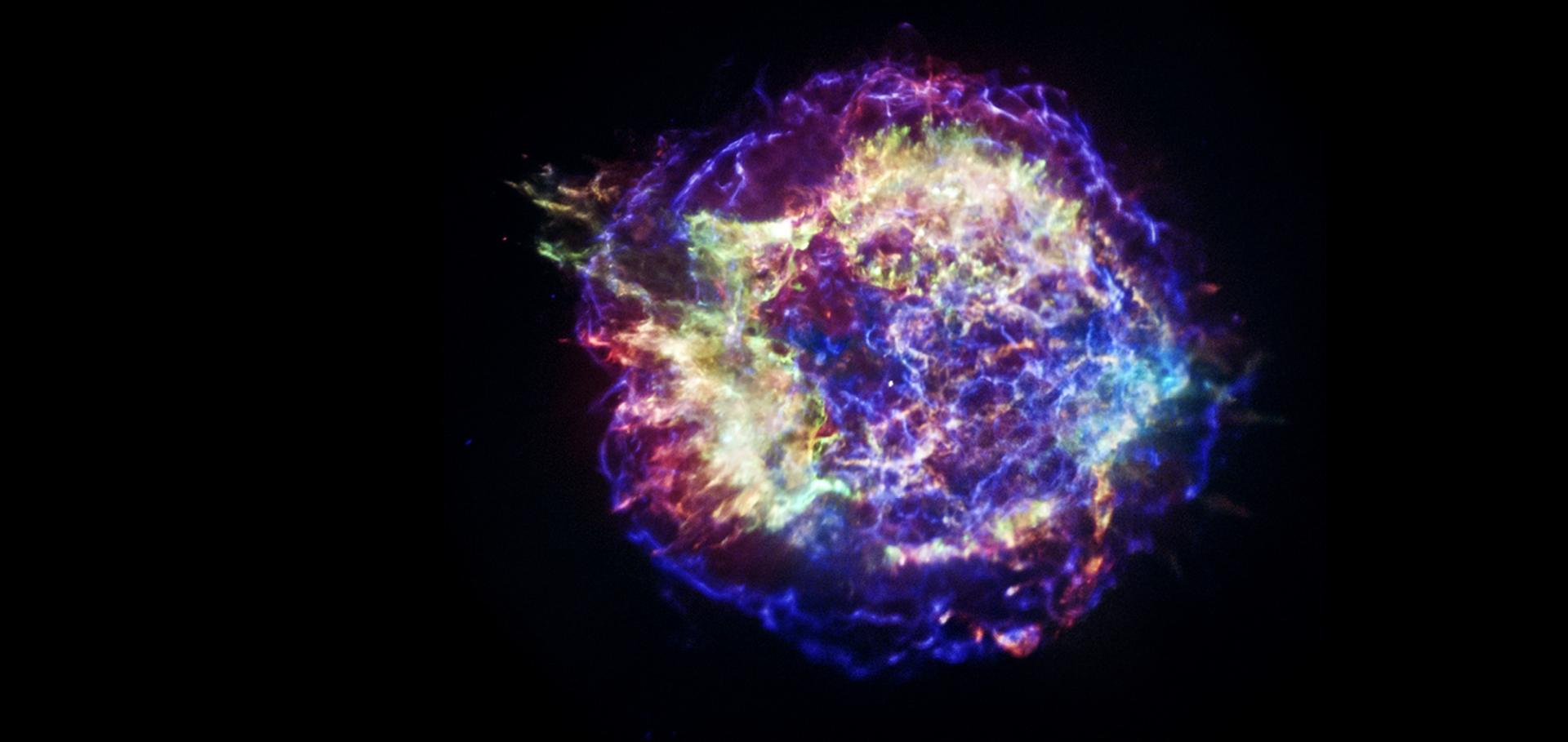A Coherent Radio Burst from an X-Ray Neutron Star in the Carina Nebula
The Astrophysical Journal Letters American Astronomical Society 985:1 (2025) L3
Abstract:
The neutron star zoo comprises several subpopulations that range from energetic magnetars and thermally emitting X-ray neutron stars to radio-emitting pulsars. Despite studies over the last five decades, it has been challenging to obtain a clear physical link between the various populations of neutron stars, vital to constrain their formation and evolutionary pathways. Here we report the detection of a burst of coherent radio emission from a known radio-quiet, thermally emitting neutron star 2XMM J104608.7−594306 in the Carina Nebula. The burst has a distinctive sharp rise followed by a decay made up of multiple components, which is unlike anything seen from other radio-emitting neutron stars. It suggests an episodic event from the neutron star surface, akin to transient radio emission seen from magnetars. The radio burst confirms that the X-ray source is a neutron star and suggests a new link between these apparently radio-quiet X-ray-emitting sources and other transient or persistent radio-emitting neutron stars. It also suggests that a common physical mechanism for emission might operate over a range of magnetic field strengths and neutron star ages. We propose that 2XMM J104608.7−594306 straddles the boundary between young, energetic neutron stars and their evolved radio-emitting cousins and may bridge these two populations. The detection of such a radio burst also shows that other radio-quiet neutron stars may also emit such sporadic radio emission that has been missed by previous radio surveys and highlights the need for regular monitoring of this unique subpopulation of neutron stars.The Thousand-Pulsar-Array programme on MeerKAT–XVI. Mapping the Galactic magnetic field with pulsar observations
Monthly Notices of the Royal Astronomical Society Oxford University Press 540:3 (2025) 2112-2130
Abstract:
Measuring the magnetic field of the Milky Way reveals the structure and evolution of the Galaxy. Pulsar rotation measures (RMs) provide a means to probe this Galactic magnetic field (GMF) in three dimensions. We use the largest single-origin data set of pulsar measurements, from the MeerKAT Thousand-Pulsar-Array, to map out GMF components parallel to pulsar lines of sight. We also present these measurements for easy integration into the consolidated RM catalogue, RMTable. Focusing on the Galactic disc, we investigate competing theories of how the GMF relates to the spiral arms, comparing our observational map with five analytic models of magnetic field structure. We also analyse RMs to extragalactic radio sources, to help build-up a three-dimensional picture of the magnetic structure of the Galaxy. In particular, our large number of measurements allows us to investigate differing magnetic field behaviour in the upper and lower halves of the Galactic plane. We find that the GMF is best explained as following the spiral arms in a roughly bisymmetric structure, with antisymmetric parity with respect to the Galactic plane. This picture is complicated by variations in parity on different spiral arms, and the parity change location appears to be shifted by a distance of 0.15 kpc perpendicular to the Galactic plane. This indicates a complex relationship between the large-scale distributions of matter and magnetic fields in our Galaxy. Future pulsar discoveries will help reveal the origins of this relationship with greater precision, as well as probing the locations of local magnetic field inhomogenities.The middle-aged pulsar PSR J1741-2054 and its bow-shock nebula in the far-ultraviolet
Astronomy & Astrophysics EDP Sciences (2025)
NICER Timing of the X-Ray Thermal Isolated Neutron Star RX J0806.4–4123
The Astrophysical Journal American Astronomical Society 972:2 (2024) 197
Abstract:
The X-ray thermal isolated neutron star (XTINS) RX J0806.4–4123 shows interesting multiwavelength properties that seemingly deviate from those of similar neutron stars. An accurate determination of the spin frequency change over time can assist in interpreting RX J0806.4–4123's properties in comparison to those of other XTINSs and the wider pulsar population. From 2019 to 2023 we carried out a tailored X-ray timing campaign of RX J0806.4–4123 with the NICER instrument. We used statistical properties of the Fourier coefficients and the Z K 2 test for phase connecting separate observations and finding a timing solution for the entire data set. We also developed a simple and universal method for estimating the uncertainties of the frequency ν and its derivative ν̇ from the empirical dependencies of Z K 2 on trial values of these parameters, with account of all significant harmonics of the frequency. Applying this method, we determined a spin-down rate ν̇=−7.3(1.2)×10−17Hzs−1 . The resulting spin-down power Ė=2.6×1029 erg s−1 is the lowest among the XTINSs, and it is a factor of 60 lower than the X-ray luminosity of this neutron star. RX J0806.4–4123 is also among the pulsars with the lowest measured Ė in general.Probing the Spectrum of the Magnetar 4U 0142+61 with JWST
The Astrophysical Journal American Astronomical Society 972:2 (2024) 176


